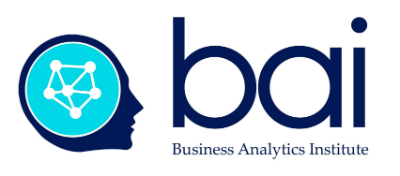Turning Data into Dollars ?

During his interview last week at the DataWorks summit, Bill Schmarzo brought up the fundamental question of the value of the data organizations are collecting with each click of the mouse.[i] When confronted with claims that “data is the new currency” [ii] and that organizations should strive to “monetize their data”[iii]; one should point out the difference between data’s value of exchange vs. its value in use. I couldn’t agree more with his conclusion that “The value of that data comes from putting it into use to make better decisions.” As we have previously suggested, data is nothing more than a proxy for the reality of our business, it has no intrinsic value outside the customer experience of our colleagues, business partners and external stakeholders.[iv] Which types of data will highlight these differing perceptions of value?
Because people look at value from different angles, they don’t see data in the same light. Together with Kees Pronk of Microsoft, we introduced the Business Value Matrix™ (BVM) several years ago to highlight the different uses of the data at hand to strengthen the customer story.[v] The BVM suggests that data provides the building blocks of the story that aligns the business challenges with their potential solutions. This cube is used to explore customer perceptions of value along three axes: how do they use data to illustrate their challenges and opportunities, what types of proof do they use to qualify the problem, what forms of data will be used to judge success?

The Business Value Matrix™
The first question underlines that each stakeholder has a a predominant belief in privileging people, process or technology as the source of value for the business. In the first instance, the stakeholder believes deep down that talent provides the primary source of value in business — management’s role is it improve the knowledge and set of its mployees, business partners and the final customers . In the second mindset, talent is less important than well organized processes — the value of the business is directly tied to organizational efforts to optimize the activities associated with key business processes. Finally, in the third case, there is a deep belief that the presence of technology (information and physical) is sufficient alone to improve the bottom line. In each case, the stakeholders will be collecting and monitoring different kinds of data as proof of current problems and future opportunities for the organization.
The second question illustrates the possibilities concerning proof of concept: stakeholders look for proof value at the level of the individual, of the firm, and of the market. For those who believe that individuals can make a difference in how a firm performs; data on individual productivity serves as a proxy for organizational success. For others a business is only as good as its weakest link — here data on how the organization performs is more important than individual measure of success. Finally, for a certain number of managers or stockholders, the only real proof is in the market itself — organizational metrics are downplayed in favor of data on customer satisfaction and market share. Data scientists here need to account for how organizational challenges are specified, the difficulties of levels of analysis, and what evidence is directly observable.
The third question focuses on how the stakeholder envisions success. For a certain number of managers, success is efficiency — data needs to focus on the costs and benefits of the activity in question. For many, effectiveness is a much better measure of success than efficiency — data needs to gage the quality of the relationship between the organization and its customers. For others, innovation is the key metric, data needs to illuminate how well the organization responds to external threats and opportunities. For others still, utilization is a different metric which suggests that success is better measured when highlighting how well organizational resources are employed over time. In each case here, the fundamental question is how data is transformed into individual or collective action. The customer story emerges from their own position each axe of the matrix.
Business analytics is less about crunching the data than about filtering information to help customers succeed in the stories they want to tell. If the business value matrix provides stakeholders with a tool to vision the potential bridges between data and customer value, data science can provide the mechanics to put descriptive, predictive, and prescriptive analytics to work for the organization. In our Summer School in Bayonne, as well as in our Master Classes in Europe, we will help you develop your analytical skills. The Institute focuses on five applications of data science for managers: : working in the digital age, data-driven decision making, machine learning, community management, and visual communications. Data-driven decision-making can make difference in your future work and career.
Lee Schlenker is a Professor at ESC Pau, and a Principal in the Business Analytics Institute http://baieurope.com. His LinkedIn profile can be viewed atwww.linkedin.com/in/leeschlenker. You can follow us on Twitter athttps://twitter.com/DSign4Analytics
— — — — — — -
[i] Albertson, M. , (2017) Data’s value? It’s all about the end game, Silicon Angle
[ii] Morgan, L. (2016), 8 Ways to Monetize Data , Information Week
[iii] Wixom, B. and Ross, J. (2017), How to monetize your data, MIT Sloan Management Review
[iv] Schlenker, L. (2017), Data is not just data…, Medium
[v] Schlenker, L. and Pronk K. (2009), The Journey to Value, Goodfellow Publishers

